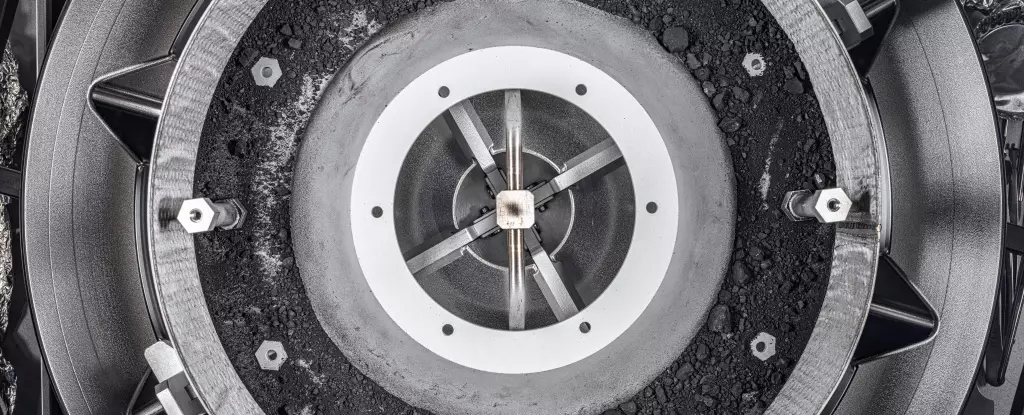After a delay of over 3.5 months, NASA has finally revealed the first high-resolution images of the contents of its Bennu asteroid sampler container. These images provide a glimpse into an extraordinary discovery – black dust and rocks measuring up to 1 cm (0.4 inch) in size. While they may appear ordinary to the naked eye, these samples have been untouched for an estimated 4.5 billion years, and they hold the potential to illuminate the mysteries surrounding the origins of our Solar System. Let’s delve into the groundbreaking significance of this development.
The journey to unlock the Bennu sample was not without its challenges. Two stubborn fasteners held the sampler lid in place, prolonging the wait for scientists eager to examine its contents. Finally, on January 10, these fasteners were successfully opened, leading to the highly anticipated release of the first images on January 19. The momentous occasion marks a significant milestone in scientific exploration.
Erika Blumenfeld, the creative lead for Advanced Imaging and Visualization of Astromaterials (AIVA), and Joe Aebersold, AIVA project lead, captured the captivating image of the Bennu sample. The photograph reveals a round metal collar, which the team intends to remove in their quest to transfer the remaining sample from the Touch-and-Go-Sample-Acquisition-Mechanism (TAGSAM) head into pie-wedge sample trays. These trays will be meticulously photographed, the samples weighed, packed, and ultimately stored at NASA’s Johnson Space Center in Houston.
In the near future, a comprehensive catalog of the Bennu samples will be released. Scientists across the globe will then have the opportunity to request access to these precious samples for further research or display purposes. Importantly, 75 percent of the sample will be carefully preserved for future analysis, ensuring its availability for generations of scientists yet to come. This approach safeguards the potential for groundbreaking discoveries and reinforces the commitment of the scientific community to furthering our understanding of the cosmos.
Astronomer Dante Lauretta of the University of Arizona Lunar and Planetary Laboratory expressed his excitement about the successful opening of the TAGSAM head and access to the returned Bennu samples. He acknowledged the extraordinary dedication and ingenuity of the team involved in this monumental achievement. Lauretta emphasized the significance of the OSIRIS-REx mission and how it contributes to our continued journey of discovery. As we eagerly anticipate the next chapter, the global scientific community awaits the opportunity to study and learn from these exceptional samples.
The OSIRIS-REx mission, now renamed OSIRIS-APEX, is not resting on its laurels. It is currently en route to another asteroid, Apophis, labeled as a potentially hazardous object. Expected to rendezvous in 2029, this ambitious expedition promises to unlock further revelations about our Solar System and the wonders it holds.
The unveiling of the Bennu asteroid samples by NASA represents a remarkable breakthrough in the field of space exploration. The images capturing the untouched dust and rocks offer a fresh perspective on the origins and evolution of our Solar System. The ongoing commitment of scientists and the global scientific community to unravel its mysteries is both inspiring and vital for expanding our understanding of the cosmos. As we move forward, armed with these precious samples, humanity’s cosmic expedition continues, paving the way for future discoveries and marvels beyond our imagination.


Leave a Reply